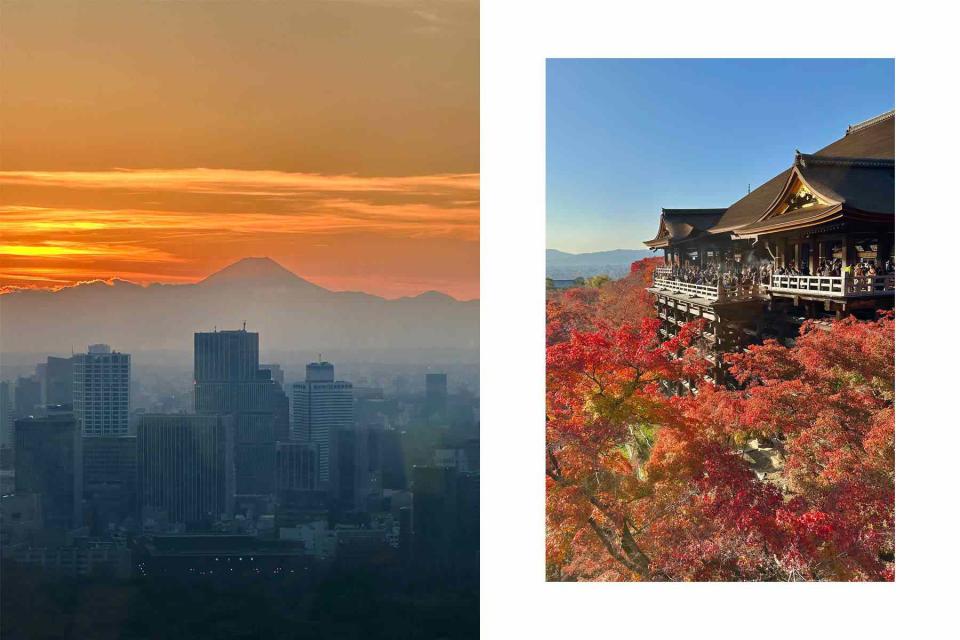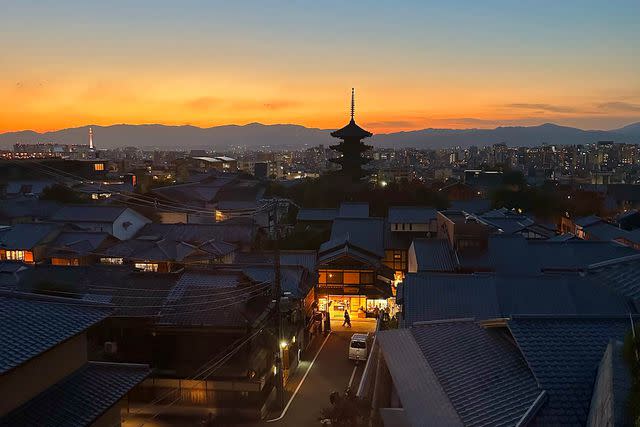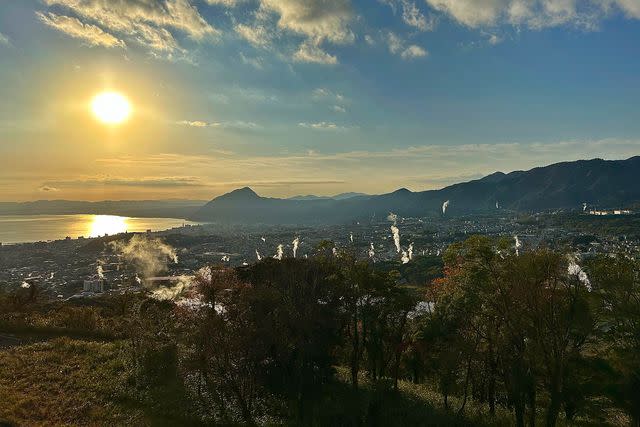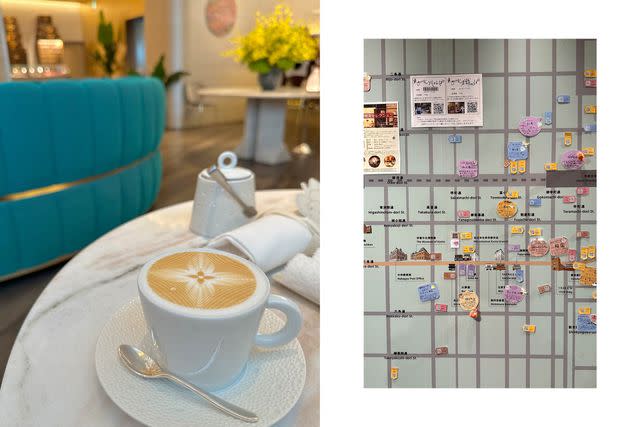Here's What's New in Japan for Travelers Planning a Trip in 2023
An expert deep-dives into how the Land of the Rising Sun has changed over the last three years.

Brandon Presser
After living in Tokyo as a student and young professional, I’ve made visiting Japan a priority at least once a year since, deep-diving new and interesting themes and destinations as the country continues to evolve both with and against the rising tide of globalization. I’ve written about everything from the secret world of “rotten girl” fan fiction manga to the far-flung village in Shikoku that’s become a cult attraction among Kengo Kuma architecture devotees; I’ve also authored three travel books about the country. This time, I’ve been on a quest to discover everything that’s new and different now that Japan’s officially open for tourism once more. Here’s what I’ve found after a month of on-the-ground research:
Hotels want to be more than just a place to stay.
They want to be your tour guide. Born from the ashes of the pandemic, hotels are leaning harder into diversifying their offerings. In Japan, hotels are upping the ante to become not just the place you hang your hat, but the lens through which you capture the destination.
Leading that trend in the luxury section is Aman, which has established a reputation for embedding itself so deep within its locales that it feels endemic. Aman Tokyo was the first Aman to take the recipe for sprawling resorts into the heart of a city; a sanctuary incorporating natural materials, a floor plan pastiche of the traditional Japanese house, and incredible views of the imperial gardens with — on a clear day — Mount Fuji just behind. During the quiet of the pandemic, the brand dug even deeper, creating a circuit of bespoke tours for guests to the nearby Nihonbashi district, where they connect with artisans who have been perpetuating precise, generations-old traditions like kimono making and chopstick whittling. At the in-house restaurant, Musashi by Aman, the eponymous chef Musashi takes diners on the most comprehensive culinary experience possible. Never mind the flight of sushi shopped from the market earlier in the day; on Sundays and Mondays, Musashi retreats to his mountain hideaway to grow rice, farm wasabi root, and spin his potters wheel into compelling ceramics — all of which then find their place on his dinner table.

Brandon Presser
The theme of intentionality continues at Aman Kyoto, which opened just as COVID-19 was ripping across Asia; a sanctuary on the outskirts of the city with a tucked-away garden in Mount Hidari's forest, inspired by the ruins of Machu Picchu, but with distinct local flair. The perfect antidote to the touristic hustle of the country’s favorite temple town, the resort’s modus operandi is to encourage guests to completely slow down, whether that means soothing soaks in the geothermal onsen, riding bikes around the nearby temples (wondrous places of worship but with a fraction of the tourist traffic), or strolling through the property’s forest and sitting down in a quiet nook with a resident artist to paint the vivid sakura buds of spring or the deep red maples of koyo in the autumn.
Across the midrange and budget categories, it’s Hoshino Resorts, the legendary Japanese hospitality company, that’s making a concerted effort to be the custodian of local culture. Their KAI properties put playful twists on Japanese wellness, granting visitors entry into an arcane realm of traditions that extend far beyond soaking one’s body in hot water. Each KAI ryokan, or traditional Japanese inn, is grounded within its native destination, where dinners and breakfasts prioritize seafood, meat, vegetables, and even dishware from the local prefecture; and activities go as in depth as creating one’s own line of beauty products using geothermal water and local essential oils.
Hoshino’s OMO hotel brand focuses on urban destinations. At their property in the Sanjo district of Kyoto, for example, there’s a map of the neighborhood painted as a massive mural in the lobby, with restaurants and shops hand-picked by the staff painted in (each one has a QR code, too, so you can save them to explore). Their hour-long “Ranger Tours” match guests to employees for brief walkabouts around the hotel; mine highlighted unique souvenirs from shops dating back 300 to 400 years.
The Olympics spawned new accommodations across the entirety of Japan, not just in Tokyo.
Tokyo’s 2020 Olympics ambitions extended far beyond supercharging the city’s infrastructure; the strategy was nationwide. Of course, the Games ended up being a pale shadow of its intended self due to COVID-19, but plans to build new hotels all across the country had long been in motion already.
While the capital certainly had its fair share of openings — most notably the dazzling new Four Season Tokyo at Otemachi, and the party-prone Tokyo Edition, Toranomon (with its sister property, the Tokyo Edition, Ginza, opening up the street next year), Kyoto saw a huge number of hospitality heavy-hitters plant roots, too. Beyond the Aman Kyoto, the heart of the city now has a dozen new and notable addresses including the Ace Hotel, Hotel Ethnography, Marufukuro in the former Nintendo headquarters, and the standout Park Hyatt Kyoto, just steps away from Kiyomizu-dera. Do yourself a favor: even if you’re not calling the Park Hyatt home, it’s imperative that you stop by at sunset for cocktails at the small bar on the fourth floor — the views of Yasaka pagoda are as iconic as any Fuji photo.

Brandon Presser
Of all the hospitality stalwarts, it’s IHG — with over 50 years' presence in Japan — that’s making the biggest bet on the country's reopening tourism boom. First out the gate in 2020 was the Hotel Indigo Hakone Gora, a hybrid retreat that blends European comfort with Japanese wellness. Then the Kimpton Tokyo Shinjuku opened next to the Park Hyatt Tokyo with more approachable nightly rates; and without an initial influx of international travelers, the pet-friendly property became a haven for well-heeled Tokyoites and their pooches during the border closures. Two more Hotel Indigos opened in 2022 — one in the forested Karuizawa area, and one on the outskirts of Nagoya, and seven more properties are slated to open in the portfolio over the next couple of years, including another Hotel Indigo in Tokyo’s vital Shibuya neighborhood.
“Now, more than ever before, there’s a lot of support to get tourism out into the rural areas of Japan,” explains Rob O'Leary, Black Tomato’s Japan travel expert. “The Kura project north of Tokyo is worth noting as a big sustainability effort to bring young Japanese back to the countryside and help renovate traditional properties for accommodation and internationally inclined tourism services.” Despite the downturn of the pandemic, the Japanese government continued a pipeline of fiscal aid to areas experiencing population drain. “We recently signed a pledge with the town of Ine on the Tango Peninsula (near Kyoto),” adds Tyler Palma, the head of operations for Inside Japan Tours. “The agreement ensures that the travelers [we bring to the region] will stay for a minimum of two nights, which will allow them to not only experience the culture and atmosphere, but give back to the local economy, thereby preserving a unique way of life.”
Kyushu is becoming the must-visit destination outside Tokyo and Kyoto.
With a spate of international travelers poised to plan their second (or third, or fourth) trip to Japan, Kyushu is eagerly positioning itself as the go-to destination for those wanting to venture a little deeper, beyond the well-trodden Tokyo-to-Kyoto circuit. The country’s third-largest island is the heartland of many of Japan’s most coveted touchstones: tonkotsu ramen (Ippudo et al.) was born in Hakata; some of the finest beef is raised on the ranches of Miyazaki; shochu is distilled from barley and potato here; and it’s where Buddhism first arrived in the Japanese archipelago. Further, Yakushima Island is said to have inspired Studio Ghibli's Princess Mononoke, and there are more hot springs per capita here than anywhere else in the country, coaxed up from the below the Earth by some of the most active volcanoes on the planet.

Brandon Presser
A long-time favorite for Korean travelers, Kyushu is closer to Seoul than Tokyo as the crow flies, and it’s now catching the eye of major hospitality players. The InterContinental ANA Beppu Resort and Spa in Beppu is the island’s first legitimate international endeavor; Hoshino has recently opened an outpost of their KAI brand here as well; and there’s a Kengo Kuma-designed KAI up the mountain in the onsen town of Yufuin nearby. Both destinations are a part of Oita Prefecture, the perfect place in Kyushu to dip one’s toe, so to speak, if you only have three extra days to venture beyond Japan 101.
Next year, The Ritz-Carlton will open in Fukuoka, Kyushu’s largest city, and the Shinkansen bullet train will continue to expand here as well, proffering speedier service to locales that have been traditionally more burdensome to reach. Check out Inside Japan Tours’ two-week self-guided Kyushu tour if you can devote more time to this worthy area.
Tokyo is finally getting more green space and pedestrian-friendly routes.
Perhaps another function of the outdoors-oriented pandemic narrative, Tokyo finally seems to have more walking arteries away from busy roads. With tiny, packed-together apartments, Tokyoites have always used shopping areas as proxy hangout spaces due to the dearth of parks relative to the sprawling size of their city. Recently, however, a handful of greener pastures (literally!) have cropped up, lined with cafes, shops, and public seating. Check out the buried metro track line in Shimokitazawa, stretching from Higashi Kitazawa station through the heart of the hip neighborhood and down to Setagaya Daita station. In Shibuya, Miyashita Park is breathing new life into a rather forlorn section of the neon-clad area. And now it’s incredibly easy to link Sensō-ji temple to the Tokyo Skytree along the newly redeveloped Mizumachi canal.

Brandon Presser
An interesting aberration of Tokyo’s shop-to-socialize culture is the creation of luxury brand cafes. Take home a piece of Fendi or Louis Vuitton at their branded eateries; a latte at the new glass snake of a building in Ginza will set you back 1,500 yen (around $12), a bargain for the brag and the Vuitton logo-ed paper napkin holder you can take home. (The coffee itself was so-so, but the geometric design on the foam was definitely worthy of the ‘gram.)
The crowds are already back.
If you’re rushing to make Japan travel plans (Japlans?) before the crowds descend on the country anew, I’m sorry to say: that ship has sailed. Kyoto’s temples are jam-packed, and reservations at must-try restaurants are already backlogged. Although mainland Chinese visitors — who made almost half of Japan’s tourism intake before the pandemic — have not yet returned, travelers from neighborhood nations like Korea and Taiwan are arriving in droves. Americans are back in full force, too, and domestic guests are moving around their country like never before thanks to a generous travel subsidy by the government putting up to 11,000 yen (around $80) a day in the pockets of roving Japanese nationals.
There’s a currency Catch-22.
In the 20 years that I’ve been visiting — or living —in Japan, I’ve never seen such a strong U.S. dollar relative to the Japanese yen. It’s made mealtime an absolute pleasure; dining in Japan has always been lower-priced and higher-quality than in Western countries, but now I find myself planning all-day eating excursions to hit up establishments that are no longer aspirationally priced, plus gorging on all of the incredible cheap eats in between. The catch, however, is that accommodation prices are soaring as hotels falsely inflate their rates for the inbound international travelers booking up their rooms. A luxury hotel room in Tokyo this month (Dec. 2022) might set you back $1,200 a night, or more, and staff at these hotels are still getting used to the onslaught of diverse demands again. Breakfast’s been a sore spot at many of the properties, with unmitigated lines, and long wait times for a cup of coffee. Kudos are owed to the Grand Hyatt Tokyo for crushing their buffet service — it's speedy, tasty, and has the best croissants in town.
Masking is still prevalent.
Endemic to Japanese society since SARS in the early 2000s, wearing a mask in public has long been a courtesy performed by those who are feeling unwell to protect people around them. Officially, mask-wearing mandates have completely relaxed, yet everyone is still wearing them all the time — even outside, even dozens of feet from the nearest person. Recently, I had to eat a meal wearing plastic gloves provided to me by the restaurant. The influx of foreign tourists will likely help normalize a more relaxed approach to masking (traveler-laden Kyoto already had noticeably less masks than some of the rural destinations I’ve visited).
For more Travel & Leisure news, make sure to sign up for our newsletter!
Read the original article on Travel & Leisure.

